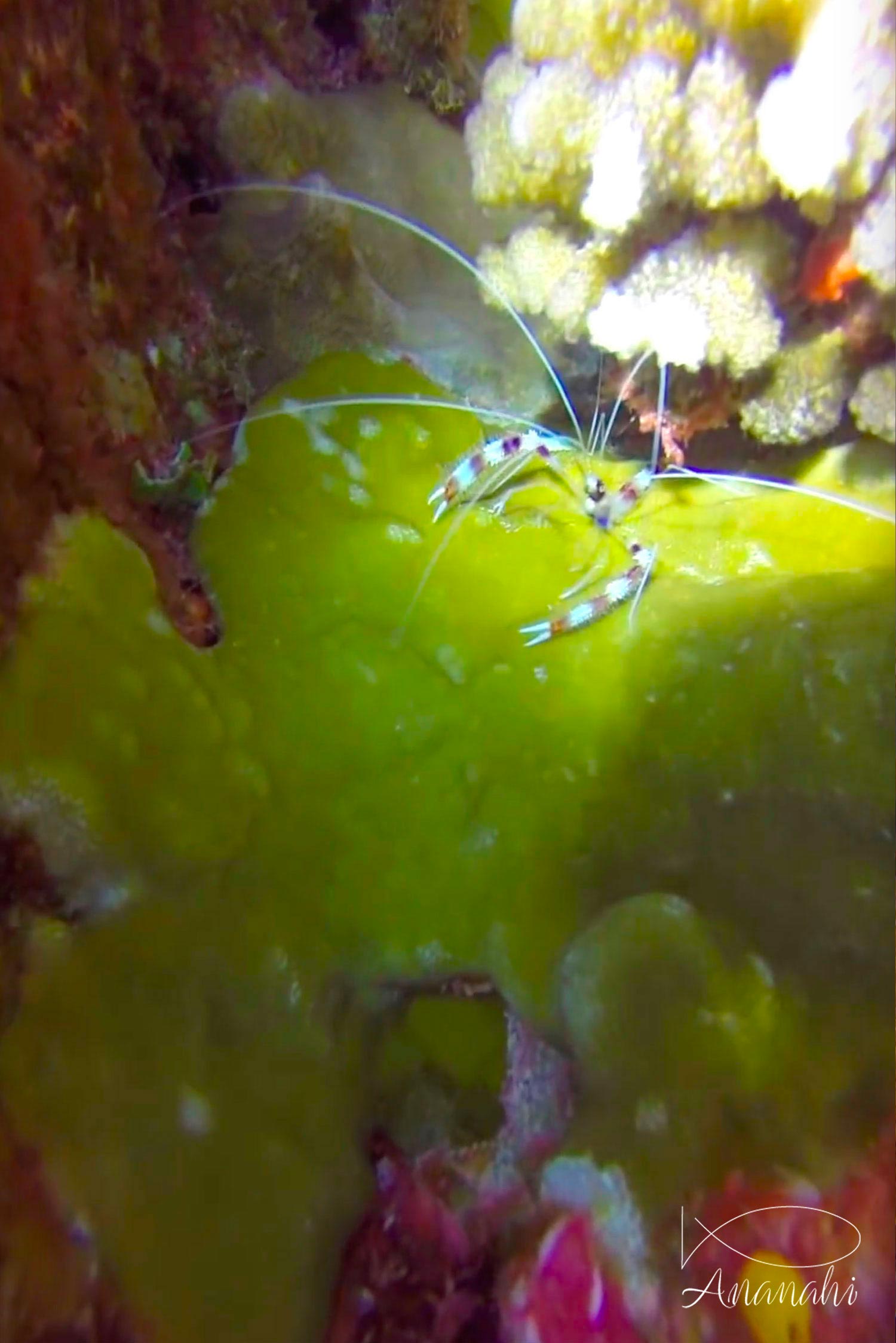
Scientific name: Stenopus hispidus
Size: From 1.6 to 3.6 inches
Color: Red brown and white
Distinguishing feature: Body hairy striped white and red brown. Large clamps and large antennas.
Where did we see it: Bali and Gili, Zanzibar, Thailand, French polynesia, Mayotte, Maldives, Raja Ampat, Egypt

Scientific name: Stenopus hispidus
Size: From 1.6 to 3.6 inches
Color: Red brown and white
Distinguishing feature: Body hairy striped white and red brown. Large clamps and large antennas.
Where did we see it: Bali and Gili, Zanzibar, Thailand, French polynesia, Mayotte, Maldives, Raja Ampat, Egypt
This shrimp species feeds on parasites that live on fish.
When the fish is in the cleaning position (open mouth, immobile), the shrimp swim to him to clean it. For example, they can enter the mouth of a moray eel without danger. Their symbiosis with reef fish is total.
They live in pairs in cavities, the male is smaller than the female.
By remaining motionless with their mouths open, they will come to clean your mouth ;) (truthful).
We can hear the bull shark is very dangerous because of attacks near La Réunion island.
However, tens of them are living at 600 feet from the famous beach of Playa Del Carmen in Mexico. And there are no attacks.
Mammals have a horizontal tail.
Fishes have a vertical fin.
Turtles are in economy mode when they are sleeping. If they are woken during night, they may not have enough air to return to surface.
So, please be careful during night dives!